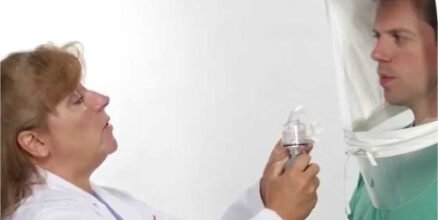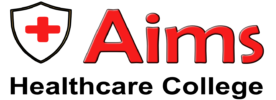N95 Mask Fit Testing

PROCEDURE & PRECAUTIONS
N95 Mask Fit Test
- The “N” means “not resistant to oil,” and the “95” refers to the filter efficiency.
Preparing for the test
- Refrain from gum chewing, smoking, eating or drinking (other than water) 15-30 minutes before testing as this may interfere with the test
- Must be clean-shaven around the seal of the mask; therefore, no facial hair where the respirator meets the face
- Women, no excess makeup
- No eating, drinking or smoking 20 minutes before the test
- If you have Epipen or inhaler. please bring it with you
Completing the Medical Screening Assessment for N95
- Respirator Assessment is necessary to identify any participant who may not wear an N95 respirator for health reasons.
How will training proceed?
- Participants will fill out the Medical Screening Assessment form for N95 Respirator Assessment
- The instructor will explain the procedure of donning and doffing masks
- The instructor will explain the procedure of testing
- Participants will do a practice section
- You will receive a certificate if they pass the test
What happens if I can’t be fit tested?
- Suppose you cannot attain a proper seal with any available respirators. In that case, you will be assessed in Occupational Health and Safety Services to find a protective mask that will fit.
When should fit testing be repeated?
- Every two years
- When a satisfactory fit-test has not been achieved
- A change in the physical condition such as obvious weight gain/loss or if there is a change in facial features
How do I know if I am getting a good seal?
- Use only the respirator fitted to you
- Be fit tested to the manufacturer’s recommendations.
- Visually inspect respirator to ensure no defects, etc., before use.
- A clean shave for men provides the best protection.
- Should perform two seal checks at donning the respirator:
- Positive pressure (exhalation check)
- Negative pressure (inhalation check)
How do I know if I am getting a good seal?
- Use only the respirator fitted to you
- Be fit tested to the manufacturer’s recommendations.
- Visually inspect respirator to ensure no defects, etc., before use.
- A clean shave for men provides the best protection.
- Should perform two seal checks at donning the respirator:
- Positive pressure (exhalation check)
- Negative pressure (inhalation check)
Positive Pressure Fit Check
- Place the palms of your hands over the front and exhale gently
- A proper fit has been obtained if the facepiece bulges slightly and no air leaks are detected between your face and the facepiece.
- If air leakage is detected, reposition the respirator on your face and adjust the tension of the elastic straps to eliminate the leakage.
- Repeat all of the above steps.
- Never enter a contaminated area; if you cannot achieve an air seal by positive and negative pressure checks.
Negative Pressure Fit Check
- Do not disturb the position of the respirator (mask)
- Cover the front of the respirator completely with both hands and inhale sharply.
- A negative pressure should be felt inside the respirator.
- If you feel any air leakage, readjust the position of the respirator or the tension of the straps and retest the seal.
To Remove (Doffing)
- There are no published data on the length of time the respirator is effective for the wearer.
- Health Canada recommends changing the mask if it becomes wet, interferes with breathing, or if it encounters respiratory droplets. Do not use damaged or visibly soiled masks.
- They are disposable and should be discarded after each use
SEQUENCES (Personal protective equipment)
- Follow the guidelines of your Organization or College.
- Wearing: Gown, Mask, Goggles, Gloves
- Removing: Gloves, Goggles, Gown, Mask
CLICK BELOW BUTTON for full information from the Ministry of Labour of Ontario.
